A shift to remote work has left many companies wondering how to efficiently capture knowledge and motivate employees to share their expertise with others.
With teams now distributed in different locations and maybe even in different time zones, it may seem harder than ever to find the formula by which remote team members will be willing to contribute and invest time in teaching others what they know.
But this can actually be achieved by creating a culture where the sense of togetherness is cultivated, and sharing knowledge with others is one of the highest values.
As there are many tips that can help you on this journey, we’ve gathered the ones that will give you the best results in the shortest time. So let’s start!
Reduce Worker Isolation
Although many welcomed remote work as a preferred way of working after the COVID-19 pandemic took hold, there’s no denying that it has certain pitfalls.
Despite all the Zoom calls and Slack messages, employees in remote settings find it difficult to develop a sense of connection with their peers and often feel isolated.
In fact, a 2022 study conducted by Buffer has found that some of the biggest challenges of not working in the office are loneliness, staying motivated, and difficulties with collaboration and communication.
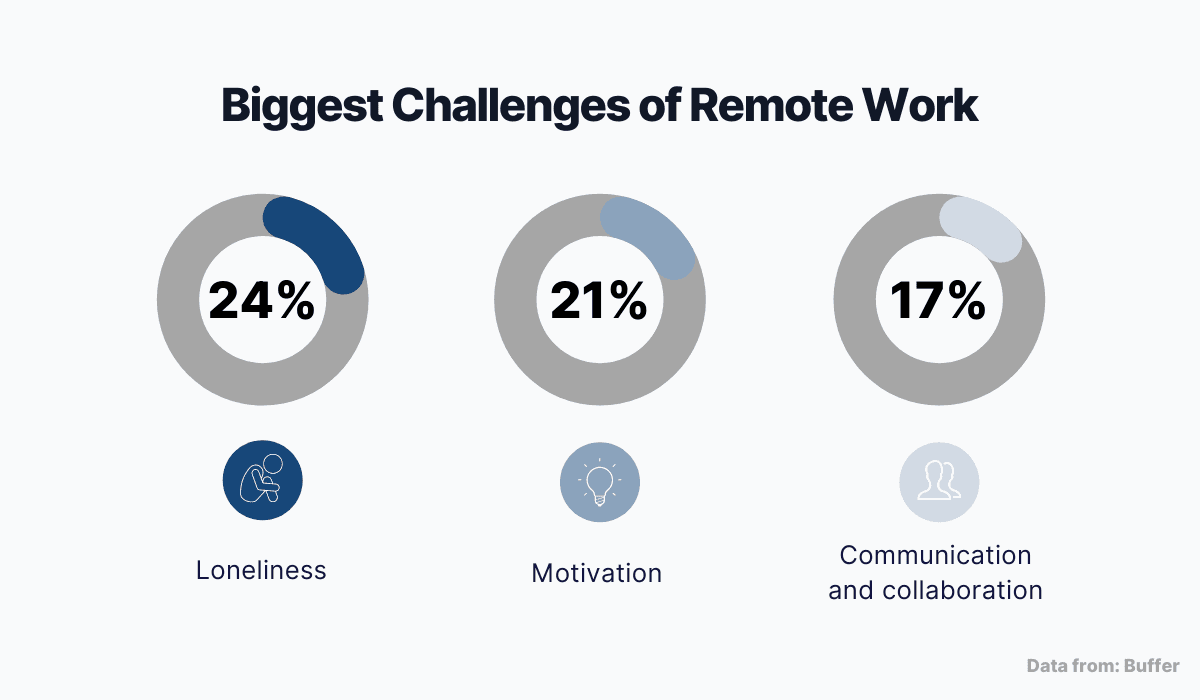
Source: Archbee
Another significant setback that is associated with remote work is highly connected with its predictability.
As everything is thoroughly thought out and planned beforehand, there isn’t much room for improvisation. And as watercooler-style conversations have become a rarity, that means that random interactions with a sudden exchange of ideas aren't so common anymore.
Therefore, to foster an environment that is conducive to curiosity and sharing knowledge, ideas, and innovations, companies need to find a way to bridge the above-mentioned issues and build stronger connections between remote workers.
Easier said than done, right?
It doesn’t necessarily need to be that way. Although it seems challenging at first, a few tried and tested techniques can help you.
For instance, since the COVID-19 pandemic started, many companies replaced traditional meetings and employee socializing opportunities with digital events such as virtual meetings, exercise classes, and happy hour gatherings to keep remote employees more connected.
For that purpose, Microsoft Teams even expanded their Together Mode to simulate the way people work in the office. New features have allowed remote workers to pretend they are conducting meetings in conference rooms, auditoriums, and even coffee shops, as you can see in the example below.
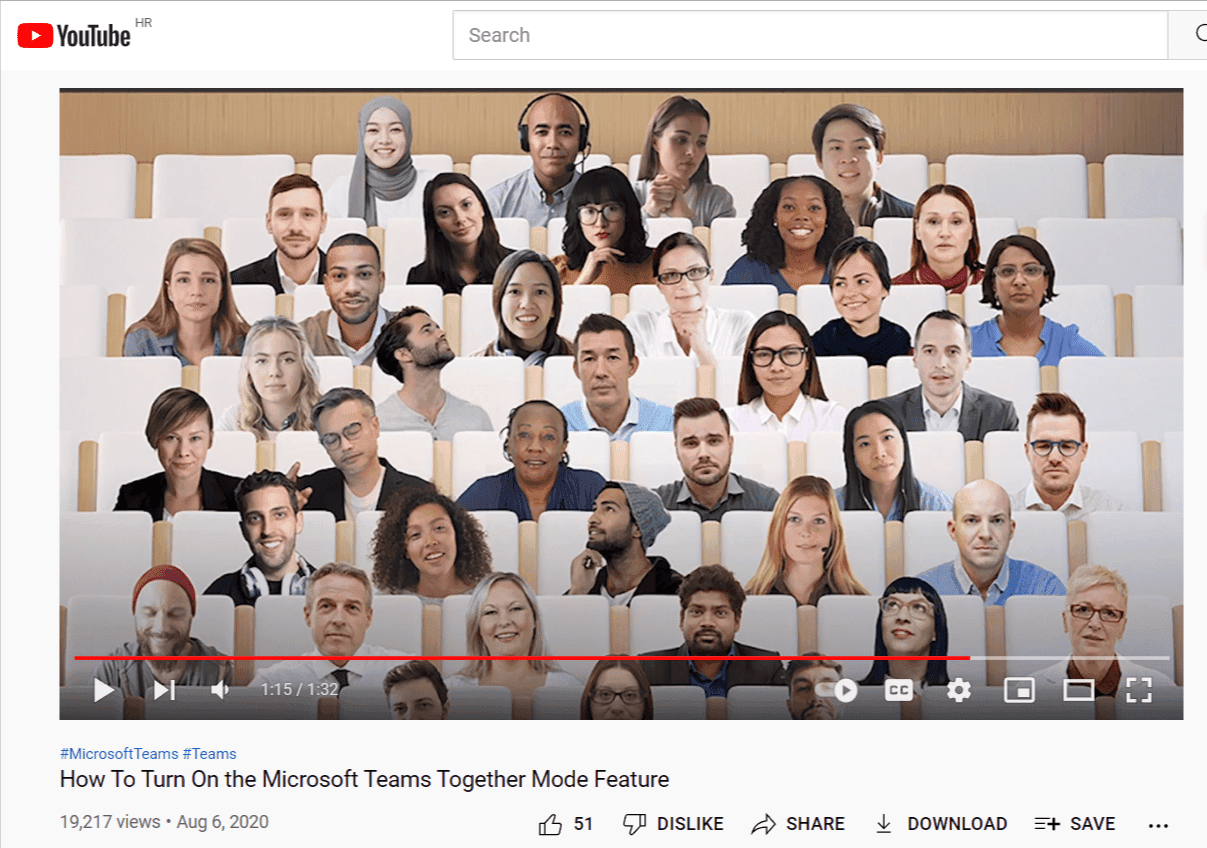
Source: Red River on YouTube
Team members can almost feel like they are sitting in the same room thanks to an innovative feature that can scale and center employees in their virtual seats regardless of how far away they are from the camera.
Moreover, this way they have a better understanding of who is talking and can focus more on the non-verbal body language and faces of the other team members.
By connecting with each other in simulated backgrounds that mimic office settings, employees can get a sense of belonging and togetherness, which will positively affect their willingness to share their knowledge with others.
Another great way to ensure that the remote workers feel connected and share their insights is to conduct meetings with a smaller number of remote workers.
For example, Swagelok, a manufacturer of fluid system products, discovered that conversations on webinars didn't allow employees to discuss their concerns on a deeper level.
That’s why they divided people into smaller teams of eight or ten and organized weekly meetings where team members could freely discuss the challenges they were facing.
And they had great results, as Amy Frank-Hensley, their global knowledge center program manager, states:
“The feedback we’ve received on that was really positive—people feel like they have a stronger connection to our organization than they’ve ever had because they have a place to share and be vulnerable,”
By building a strong connection between the remote workers, you will enable them to feel more like a team and encourage them to share their thoughts, insights, and ideas. That will eventually lead to a great knowledge-sharing culture. But more on that in the next section.
Work on Building a Knowledge-Sharing Culture
The difficulties regarding sharing knowledge and experiences with others within the organization is one of the biggest concerns companies have with remote work.
The concern is well justified if we keep in mind that sharing information improves the sense of connection within the team, builds trust, enhances engagement and productivity, improves teamwork, and enables employees to become experts in their field.
In fact, according to the Deloitte survey, 75% of companies agree that knowledge sharing is important or very important for their success in the next 12-18 months.

Source: Archbee
But how to motivate remote employees to share knowledge with each other when they are apart?
Once you set the stage by making employees feel more connected, as we discussed in the previous section, this task will be less difficult with a few proven tips.
First, leaders of the company should lead by example. Remote employees will more likely share their knowledge if they see executives doing the same.
They can, for instance, contribute by writing down the company's mission, vision, and values and sharing it with the rest of the remote employees.
They can even go a step further and share not only their knowledge but experiences as well, as we can see in the example of Joel Gascoigne, co-founder and CEO of Buffer.
You can read his entire story by following the link below.

Source: Buffer
Although he was regularly exercising, the challenges of keeping the company above water in the early days took a toll on his health, and he began to experience burnout.
Over time, the symptoms only worsened until he was unable to work and had to take a month and a half off.
Although it wasn't easy to share this story with the rest of the Buffer team because of the preconception that the CEO should always be in charge of the situation, he did it anyway.
And that had a huge impact on creating a culture of sharing knowledge and experiences in Buffer.
You have to lead by example to have the most success. There’s a preconceived notion that the CEO should be the strongest person on the team and not share openly, but I try to be almost the opposite and that’s made it easier for others. - Joel Gascoigne
If executives practice what they preach like in the Buffer example, other employees will have no problem writing down their go-to processes, creating troubleshooting tutorials, describing protocols and sharing them with the rest of the team.
Once other employees see how those team members have gained recognition among their peers and how their efforts are valued in the company, they'll also more likely want to contribute with their own expertise.
And with that, you’ll be well on your way to building a strong culture where knowledge-sharing is one of the most appreciated practices in which everyone wants to participate.
Use Your Internal Social Network
To a large extent, a company's success depends on good communication and collaboration between its employees.
For a remote team to work together effectively and communicate well across the company, it would be good to set up an enterprise social network (ESN), such as Yammer, Chatter, Teams, Jabber, or Jive.
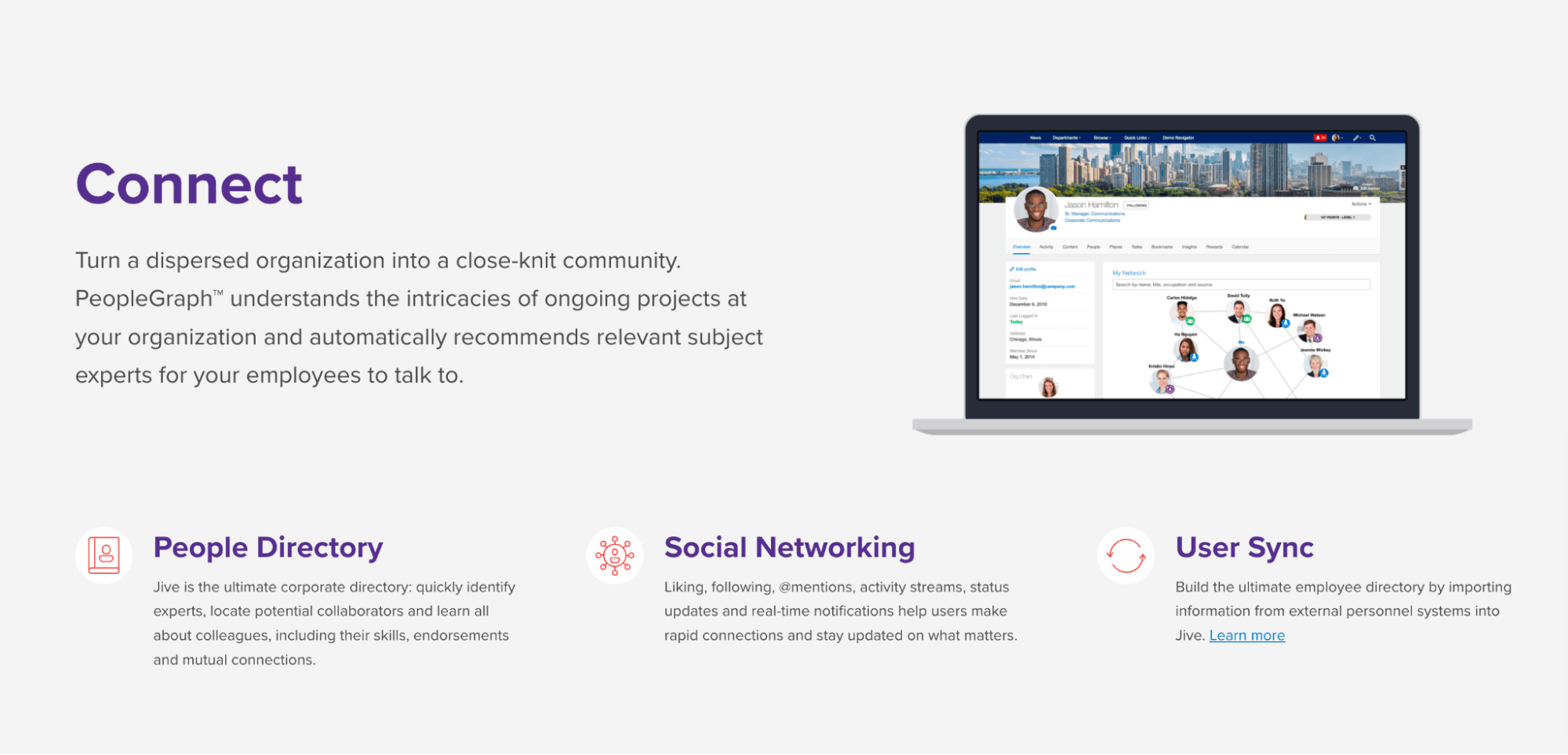
Source: Jive
It's almost like having a social network like Facebook but created just for your company, through which remote employees can communicate, socialize, collaborate, and share ideas.
However, if you only install ESN and are not working on gathering and sharing internal knowledge, this tool alone will not benefit your company to its fullest extent.
Therefore, at the same time as introducing ESN, you should start building a knowledge base or internal wiki to give additional value to your team's communication.
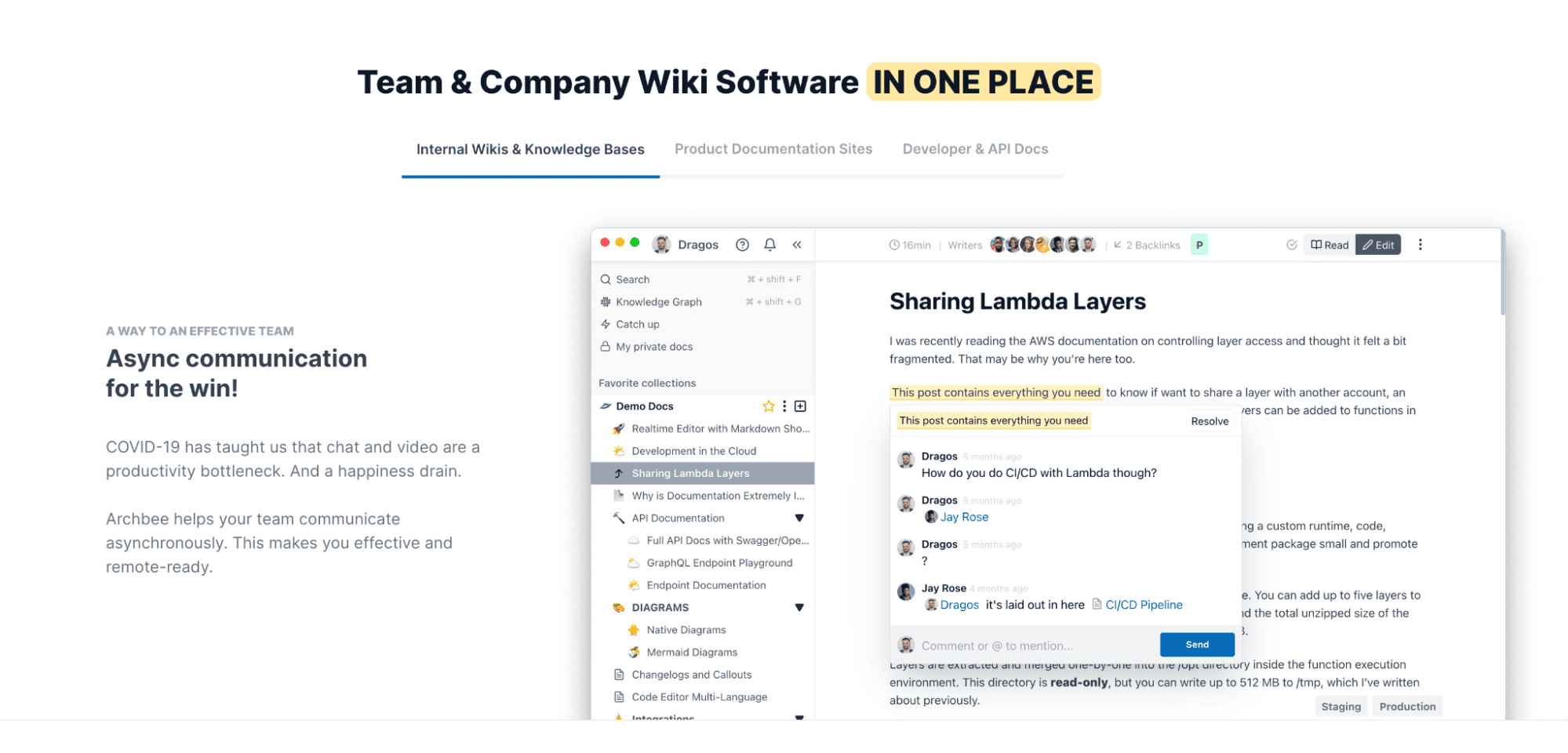
Source: Archbee
That way, your remote employees can make the most of their internal social network because they will be able to, besides day-to-day communication, share knowledge that will be permanently available to everyone at the company.
For example, you can combine your ESN with quality documentation software, such as our own product, Archbee.
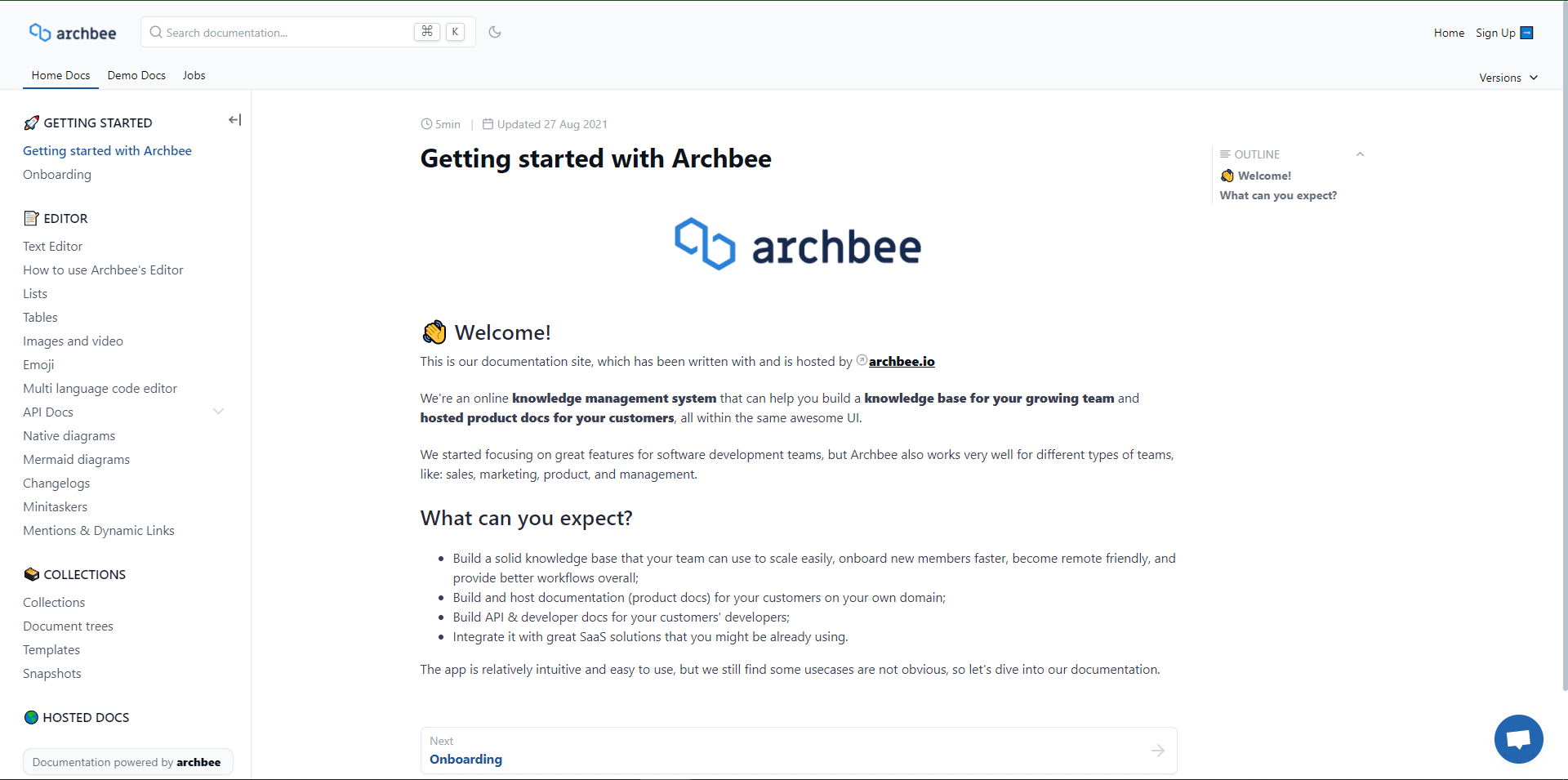
Source: Archbee
Archbee will enable your remote employees to access the company's knowledge base no matter where in the world they are located. After that, they can easily discuss it, comment on it or share it in their day-to-day communication.
How you can get the most for your company by implementing such an internal social network can easily be seen in the example from Mercy Ships.
Mercy Ships is an international charity that operates the world's largest hospital ships, providing free healthcare services in Africa.
As you can imagine, managing ships like these is a huge project as it involves hundreds of employees around the world, thousands of volunteers, not to mention the donors.
That's why they started using Confluence as an enterprise social network, which enabled them to encourage their remote teams to share their knowledge and their business and personal insights and successes with others.
Source: Atlassian on YouTube
This enterprise social network allows remote employees to create bio pages just like on Facebook, as well as to blog about their experiences, and share little wins but also fun times that they had together, thus boosting the sense of belonging.
At the same time, Mercy Ships use this tool to organize and structure work and knowledge, provide tips and tools for volunteers, publish vaccine schedules, and share stories about patients that they've helped.
They also publish other helpful procedures, protocols, and documents.
As you can see, by using an internal social network, you can largely unify and organize disparate employees that often work half a world away from each other, as well as encourage them to work as a team that has great collaboration and sharing knowledge habits.
Create an Internal Knowledge Base
If you have a quality knowledge base in place, your remote employees will quickly see its benefits.
They’ll be available to get important project protocols or product data they need to do the work with just a few mouse clicks and won’t waste too much time searching for the information.
After realizing the advantages that they have from using the knowledge base in their day-to-day work, it will be easier to convince them to contribute to its growth and development by writing valuable internal documentation.
But this often isn’t the case in practice, as we can see from the GitHub survey that reports that 93% of employees think that the biggest problem with knowledge bases is incomplete or outdated documentation.
On the other hand, 60% of team members said that they rarely or never contributed to documentation.

Source: Archbee
One of the ways you can deal with this issue is to make sure that your knowledge base consists only of relevant and up-to-date information. That way, your employees can perceive it as a valuable resource.
That means you will have to revise your knowledge base periodically, see if the links or screenshots are broken or outdated, write new content, rewrite articles that are no longer current, and check if everything is in place.
To make these tasks more manageable, use documentation software, such as Archbee, which has a lot of built-in functions that will enable you to keep your knowledge base current.
With Archbee, you can easily edit content, write posts, import files, insert images and embed videos. In other words, you can do everything you need to have an engaging and efficient knowledge base.
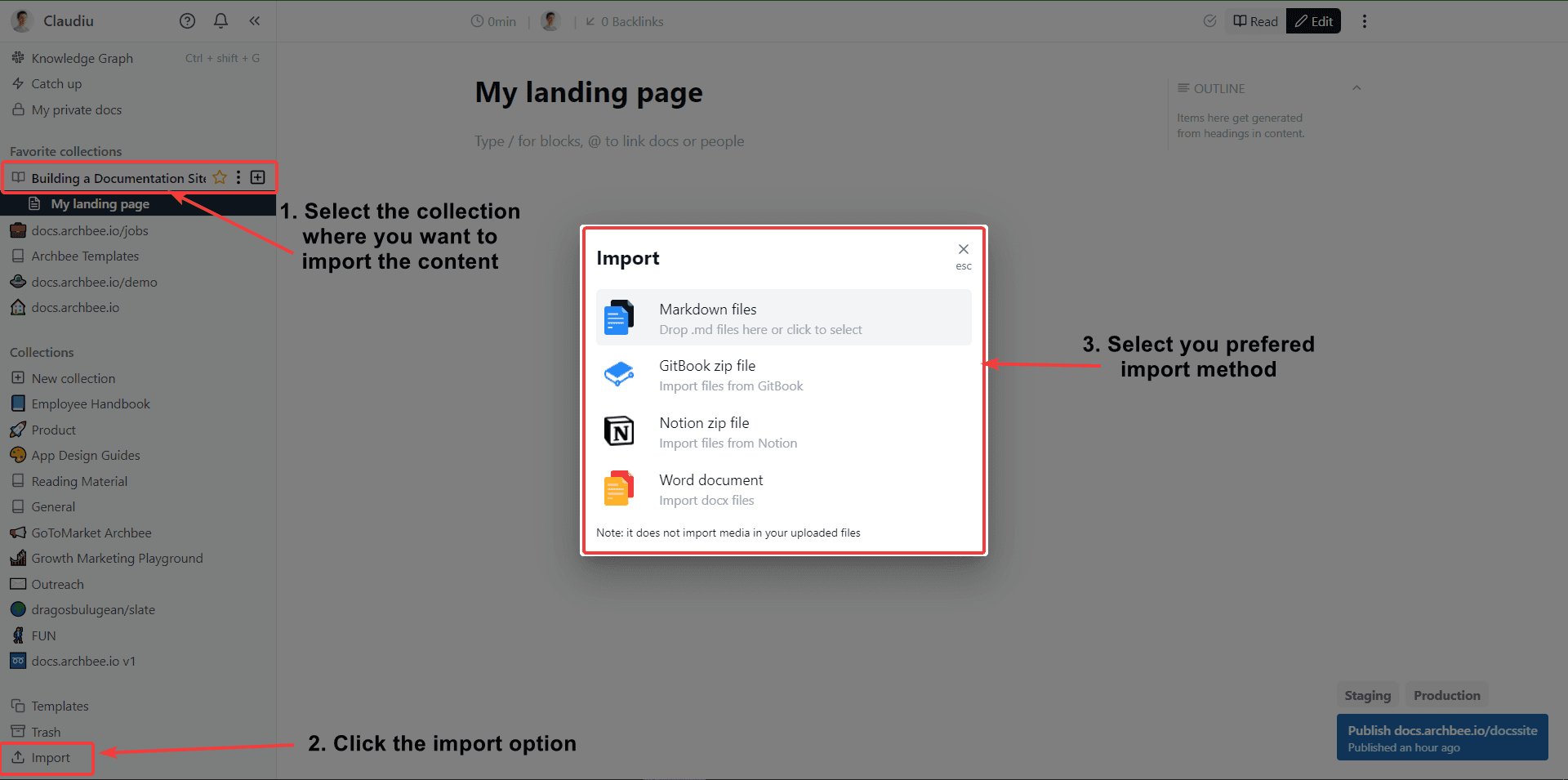
Source: Archbee
Once you put your knowledge base on an online platform and everyone understands how easy it is to use and edit it, you can easily make knowledge sharing a part of your performance reviews.
For instance, you can ask your remote workers to periodically review content and share it with others. Or you can request to contribute to the knowledge base by writing one article per month.
If you let your employees know that the sharing of knowledge is something that is expected of them and that you'll measure their performance based on how much they contribute to the building of knowledge base, they will be more willing to share what they know with others.
That way, your knowledge base will not only stay relevant and valuable to your remote employees but it will also grow exponentially and be filled with new content created by employees themselves.
Use Videos to Facilitate Easy Knowledge Sharing
In remote work settings, employees don’t often get the chance to meet face-to-face. It’s more probable that they will never meet besides in the virtual meetings.
If you have that possibility, it would be a great idea to incorporate video in your knowledge-sharing process.
Your remote employees will not only get the chance to learn from each other but also get to know each other a little bit better.
Videos are engaging, and people find them less time-consuming than reading the text, especially when it comes to tutorials, troubleshooting, or how-to guides.
In fact, the statistics show that viewers retain 95% of the messages they’ve seen in videos, compared to only 10% when they read certain information in the form of a text.
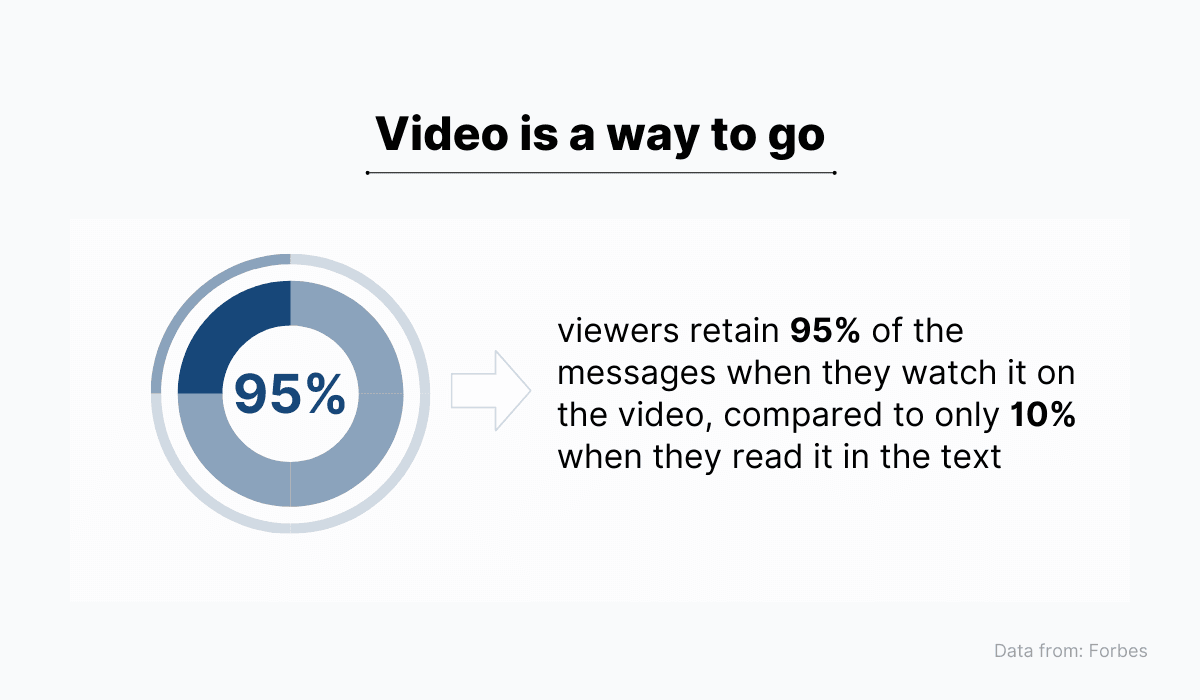
Source: Archbee
That’s why it would be a great idea to encourage your remote employees to, depending on their area of expertise, create videos on various topics and share them with the rest of the team.
For example, this kind of practice is at the center of sharing knowledge culture in GitLab as they largely use videos in their remote work.
GitLab is a DevOps platform that employs about 1,500 remote workers in more than 65 countries.
As they are growing fast and operate exclusively remotely, there was a need to quickly exchange knowledge among remote co-workers.
They solved this problem by recording video conferences, presentations, and other important virtual events to the extent that today they even live-stream meetings on YouTube.
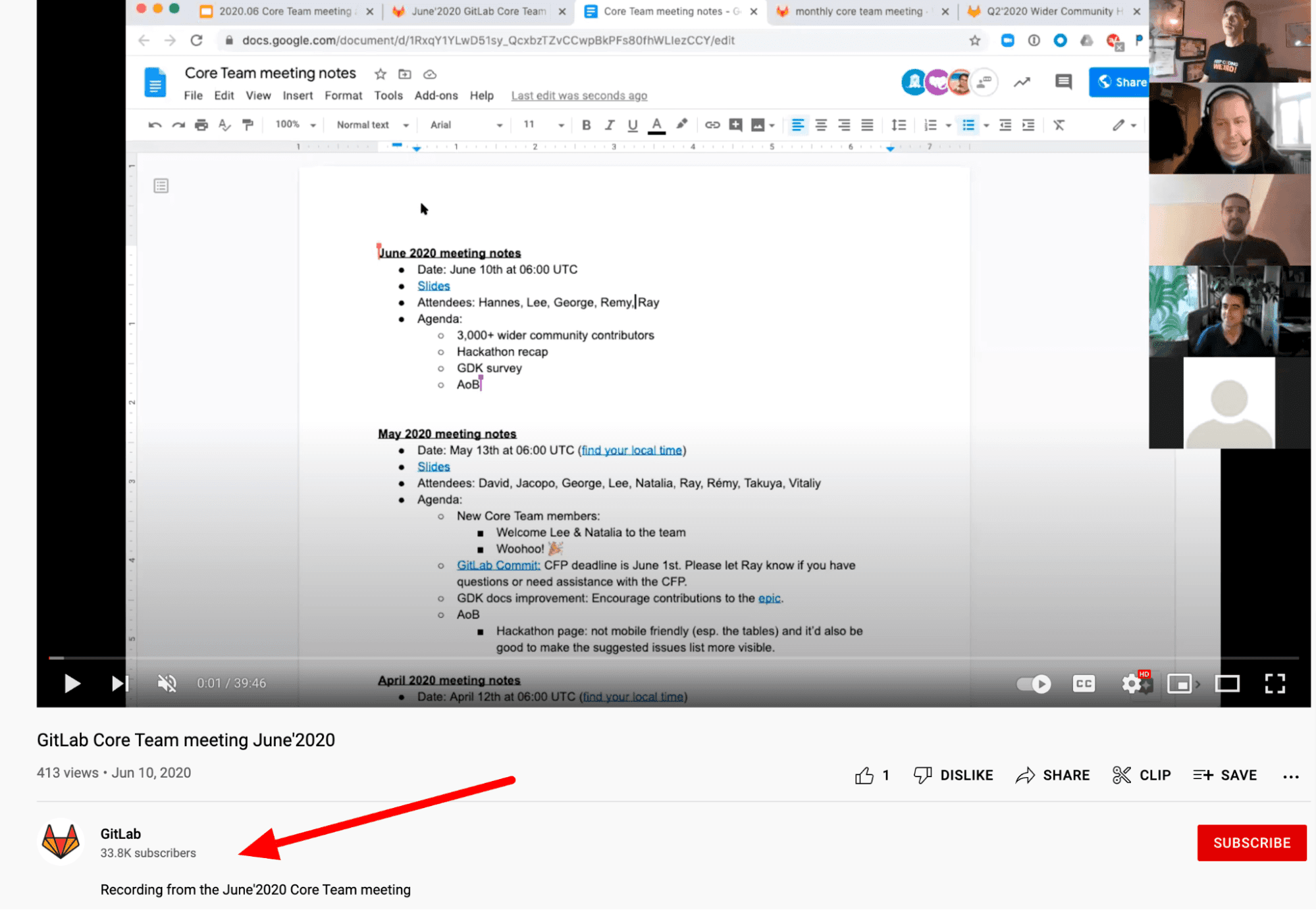
Source: Youtube
They have a YouTube channel with millions of views. They don’t prepare too much for this video content–they just have a meeting, record it, and upload it to YouTube.

Source: YouTube
In their everyday work, they encourage employees to record videos from meetings and presentations and upload them to an internal knowledge resource called GitLab Unfiltered.
As everyone has access to this channel, everyone in the company can share their videos and see what others are saying.
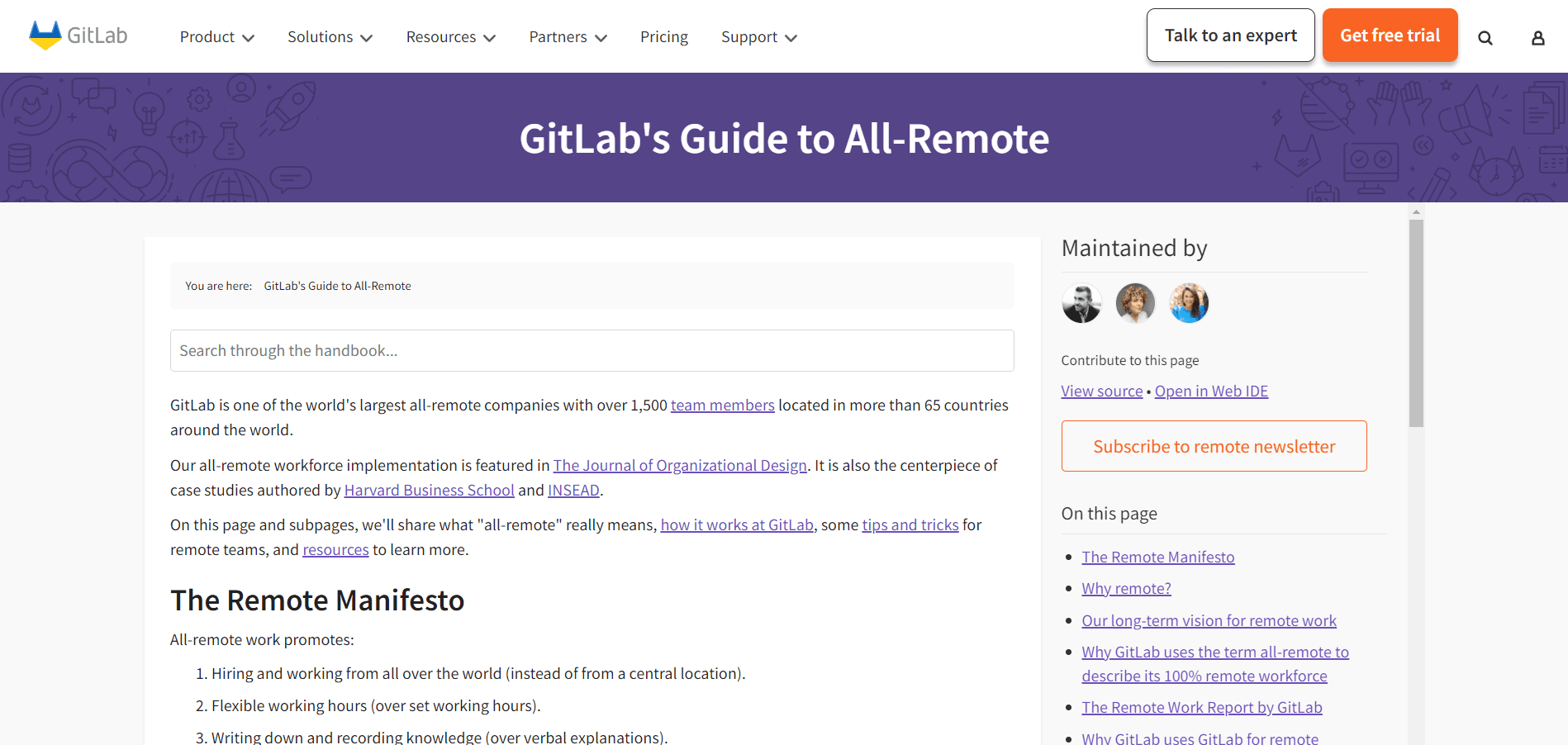
Source: GitLab
Some of these lessons are also available in their publicly accessible remote guide on their website.
This guide is so extensive that it is undoubtedly one of the biggest knowledge bases about remote work in the world, and it's increasing every day as new content is being added.
That way they are building an extensive multichannel knowledge base that all the GitLab remote employees can access, learn and give their contribution to in the form of recording their own videos.
As you can see, in high-performing remote companies, videos can be a great way to create a knowledge base quickly–it’s cheap, engaging, and everyone can take part in sharing their expertise. All it takes is pressing the recording button.
Conclusion
In this article, we gathered four best tips to help you understand how connecting employees and insisting on a knowledge-sharing culture can bring you excellent results.
We also tried to explain the importance of building a knowledge base in one centralized place and inspire you to take a step further and start enriching it with videos.
Hopefully, you were able to find a handful of good advice that you can use for your company. But remember, it may seem like a huge undertaking at first, but if you invite all your employees to pitch in, it will soon become a breeze.
Frequently Asked Questions
Common pain points include: - Loneliness and a weaker sense of belonging - Collaboration and communication hurdles (fewer non-verbal cues, more misinterpretation) - Fewer spontaneous interactions and idea-sharing moments - Time zone gaps that slow decisions and feedback cycles - Over-structured routines that leave little room for improvisation - Visibility and recognition gaps for quieter contributors - Tougher onboarding and handoffs without strong documentation - Tool sprawl and meeting fatigue These factors can fragment knowledge and make it harder to stay aligned and motivated.



